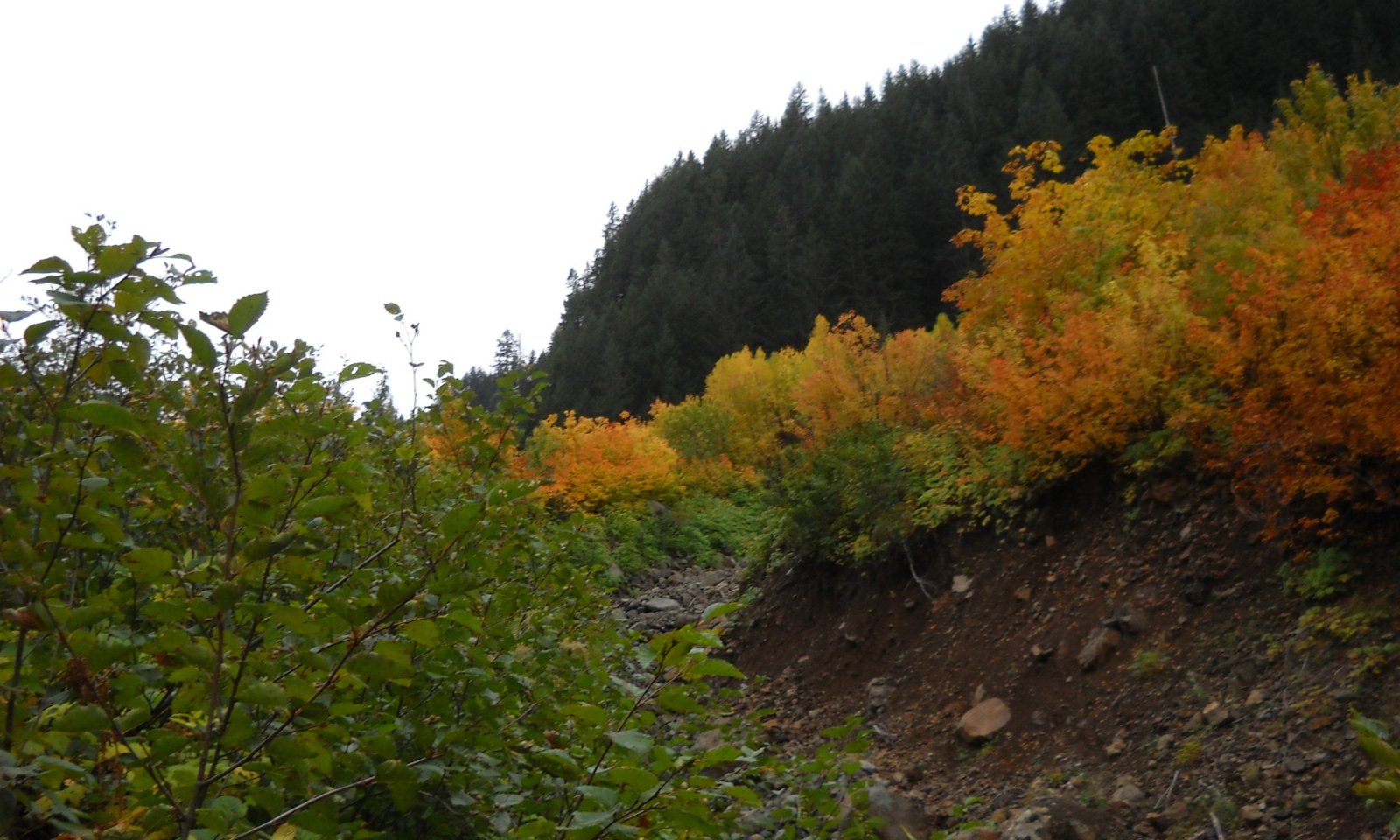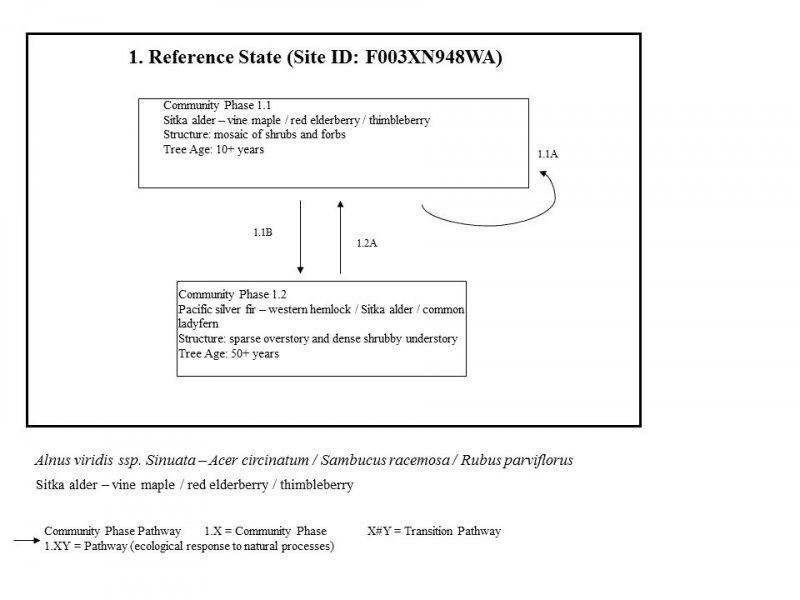

Natural Resources
Conservation Service
Ecological site F003XN948WA
Southern Washington Cascades Low Cryic Deciduous Forest
Last updated: 5/10/2024
Accessed: 12/22/2024
General information
Provisional. A provisional ecological site description has undergone quality control and quality assurance review. It contains a working state and transition model and enough information to identify the ecological site.
MLRA notes
Major Land Resource Area (MLRA): 003X–Olympic and Cascade Mountains
Steep mountains and narrow to broad, gently sloping valleys characterize this MLRA. A triple junction of two oceanic plates and one continental plate is directly offshore from Puget Sound. Subduction of the oceanic plates under the westerly and northwesterly moving continental plate contributes to volcanic activity in the Cascade Mountains. Movement among these plates has resulted in major earthquakes and the formation of large stratovolcanoes. The Cascade Mountains consist primarily of volcanic crystalline rock and some associated metasedimentary rock. The mean annual precipitation is dominantly 60 to 100 inches, but it is 30 to 60 inches on the east side of the Cascade Mountains.
The soil orders in this MLRA are dominantly Andisols, Spodosols, and Inceptisols and minor areas of Entisols and Histosols. The soils are dominantly in the frigid or cryic temperature regime and the udic moisture regime. The soils generally are shallow to very deep, well drained, ashy to medial, and loamy or sandy. They are on mountain slopes and ridges.
Ecological site concept
This ecological site is in cold, moist areas at an elevation of 2,100 to 6,600 feet. It is in active avalanche chutes of debris cones on glacial-valley walls. The most common disturbances are avalanches, rockfalls, and debris flows. Wildfires are not common; however, the steep slopes facilitate rapid upslope movement of wildfires.
The soils that support this ecological site are in the cryic soil temperature regime and the udic soil moisture regime. They are formed in mixed colluvium and volcanic ash. The soils are well drained and very deep. They are not subject to flooding or ponding. Soil moisture is not a limiting factor for forest growth because of the abundance of precipitation and the inherent water-holding properties of soils influenced by volcanic ash. A thin organic horizon consisting of decomposing twigs, needles, and litter is on the soil surface. This horizon helps to protect the soil from wind and water erosion.
As a result of the frequent disturbances, this site primarily supports early seral species such as Sitka alder (Alnus viridis ssp. sinuata) and vine maple (Acer circinatum). Common understory shrubs include red elderberry (Sambucus racemosa), thimbleberry (Rubus parviflorus), salmonberry (Rubus spectabilis), and devilsclub (Oplopanax horridus).
Associated sites
| F003XN952WA |
Southern Washington Cascades High Cryic Deciduous Forest Ecological site F003XN948WA, Southern Washington Cascades Low Cryic Deciduous Forest, is located at lower elevations compared to site F003XN952WA, Southern Washington Cascades High Cryic Deciduous Forest. Both sites are in active avalanche chutes. Ecological site F003XN948WA dominantly supports tree species such as Pacific silver fir and western hemlock. Site F003XN952WA dominantly supports species such as subalpine fir, mountain hemlock, and Alaska cedar. |
|---|
Similar sites
| F003XN952WA |
Southern Washington Cascades High Cryic Deciduous Forest Ecological site F003XN948WA, Southern Washington Cascades Low Cryic Deciduous Forest, is located at lower elevations compared to site F003XN952WA, Southern Washington Cascades High Cryic Deciduous Forest. Both sites are in active avalanche chutes. Ecological site F003XN948WA dominantly supports tree species such as Pacific silver fir and western hemlock. Site F003XN952WA dominantly supports species such as subalpine fir, mountain hemlock, and Alaska cedar. |
|---|
Table 1. Dominant plant species
| Tree |
(1) Alnus viridis ssp. sinuata |
|---|---|
| Shrub |
(1) Sambucus racemosa |
| Herbaceous |
Not specified |
Click on box and path labels to scroll to the respective text.


